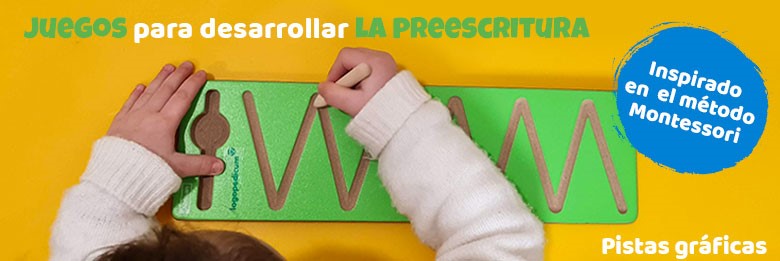
Aprender es modificar o adquirir nuevas habilidades, destrezas, conocimientos, conductas y valores mediante la experimentación, el estudio, la observación, el razonamiento o la instrucción. Múltiples y variados juegos disponibles hoy en día, desde los más clásicos hasta los más innovadores, pueden ser grandes herramientas para construir una variedad de aprendizajes: lectoescritura, matemáticas, razonamiento y resolución de problemas, etc. aportando motivación e interés a los jugadores. Más allá de la estimulación de las inteligencias múltiples, fomentaremos la autoestima, incentivaremos la cooperación y el trabajo en equipo y mejoraremos el comportamiento y la actitud, entre otros muchos aspectos.
 Auditory Memory Caterpillar
29,90 € (VAT not included)
Auditory Memory Caterpillar
29,90 € (VAT not included)
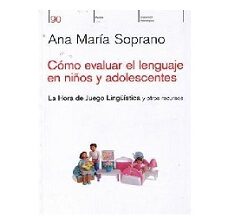 Cómo evaluar el lenguaje en niños y adolescentes
31,50 € (VAT not included)
Cómo evaluar el lenguaje en niños y adolescentes
31,50 € (VAT not included)
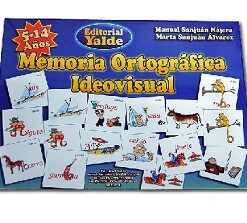 Ideo-visual orthographic memory
Sold out (VAT not included)
Ideo-visual orthographic memory
Sold out (VAT not included)
 Tetra Bites Teether - Fidget
12,75 € (VAT not included)
Tetra Bites Teether - Fidget
12,75 € (VAT not included)
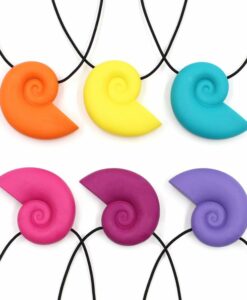 Teething necklace - Sea Snail
14,50 € (VAT not included)
Teething necklace - Sea Snail
14,50 € (VAT not included)
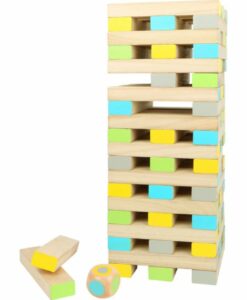 XXL Balance Tower
53,75 € (VAT not included)
XXL Balance Tower
53,75 € (VAT not included)
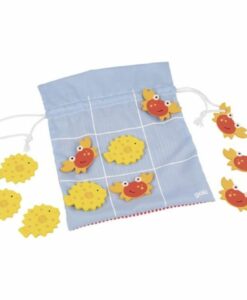 Tic Tac toe - 3 in a row cloth
4,15 € (VAT not included)
Tic Tac toe - 3 in a row cloth
4,15 € (VAT not included)
No account yet?
Create an AccountFun and dynamic material to work on oral and written language. The set consists of 52 illustrated cards (26 pairs) representing situations of everyday life. Specifically, each pair shows the "before" situation (e.g. children with buckets of sand on the beach) and the "after" situation (e.g. children sitting next to a sand castle).
The pack contains a metal box for storage and transport of the cards.
https://logopedicum.com/wp-content/uploads/2015/06/antes-despues-247x300.jpg 22.39 instock Communication and pragmaticsLANGUAGELEARNINGSNarrative discourseSemanticsMadeira 0 0.00 0 https://logopedicum.com/wp-content/uploads/2015/06/antes-despues-247x300.jpg 2163921606217172167221660 22.39 18.50 0.00 0.00 2015-06-15T14:12:29+02:00Clear and attractive material to work on temporalization through oral or written language. Specifically, the set consists of 60 photographs representing time series of different situations of everyday life. Each group is formed by 3 cards showing the chronology: "before" situation (e.g. black and white drawing), "during" (e.g. some crayons) and "after" (e.g. painted drawing).
Very interesting resource to visualize the sequencing of actions and thus facilitate the understanding and use of the verb tenses applied.
https://logopedicum.com/wp-content/uploads/2022/03/Antes-despues-1-247x300.jpg 30.55 instock De 3 a 6 añosJuguetes terapéuticosLANGUAGENarrative discourseMadeira 0 0.00 0 https://logopedicum.com/wp-content/uploads/2022/03/Antes-despues-1-247x300.jpg 2160921639215912174121657 30.55 25.25 0.00 0.00 2022-03-17T12:57:21+01:00Photographic material consisting of 54 photographs illustrating different daily activities broken down into sequences of 3, 4 or 5 scenes. Using these sequences we can encourage verbal expression, paying special attention to lexical evocation, morpho-syntax, narrative discourse, etc. These cards can be used both with children and adults as a whole sequence (with the cards that are considered) or as an individual card. They are a very versatile, flexible and fun resource for language re-education and both oral and written communication.
Fun and dynamic material to work on oral and written language. The set consists of 52 illustrated cards (26 pairs) that represent situations that allow to infer "what would happen if...". This resource is especially interesting to develop the capacity for abstraction, theory of mind, logical reasoning,...
The pack contains a metal box for storage and transport of the cards.
https://logopedicum.com/wp-content/uploads/2015/06/que-pasaria-si-247x300.jpg 22.39 instock LANGUAGEMorphology and syntaxNarrative discourseCommunication and pragmaticsLEARNINGSMadeira 0 0.00 0 https://logopedicum.com/wp-content/uploads/2015/06/que-pasaria-si-247x300.jpg 2172021660216752089421591 22.39 18.50 0.00 0.00 2015-06-15T14:13:43+02:00Fun material to work both oral and written language. The set consists of 56 illustrated cards (28 pairs) that represent situations that allow you to predict the immediate consequences or effects (e.g. A little boy puts the leash on his dog, and ... what will happen next? The child will go for a walk with his dog). Contains an explanatory card with ideas for different game options (memory, auditory description,...).
The pack contains a metal box for storage and transport of the cards.
[/vc_column_text][/vc_column][/vc_row][vc_row][vc_column][woodmart_title woodmart_css_id="64593354c81c3" title="BLOG | MUNDO LOGOPEDICUM" woodmart_empty_space="" responsive_spacing="eyJwYXJhbV90eXBlIjoid29vZG1hcnRfcmVzcG9uc2l2ZV9zcGFjaW5nIiwic2VsZWN0b3JfaWQiOiI2NDU5MzM1NGM4MWMzIiwic2hvcnRjb2RlIjoid29vZG1hcnRfdGl0bGUiLCJkYXRhIjp7InRhYmxldCI6e30sIm1vYmlsZSI6e319fQ=="][/vc_column][/vc_row][vc_row][vc_column][vc_column_text woodmart_inline="no" text_larger="no"]https://mundologopedicum.com/ideas-practicas/5-actividades-para-estimular-el-lenguaje-oral-4/[/vc_column_text][/vc_column][/vc_row] https://logopedicum.com/wp-content/uploads/2015/06/causa-efecto-247x300.jpg 22.39 instock LANGUAGESemanticsNarrative discourseCommunication and pragmaticsLEARNINGSMadeira 0 0.00 0 https://logopedicum.com/wp-content/uploads/2015/06/causa-efecto-247x300.jpg 2159821297216032126121708 22.39 18.50 0.00 0.00 2015-06-15T14:13:04+02:00Illustrated cards to work on oral and written language. The set consists of 56 colorful cards ideal to encourage patients of all ages to create oral and written stories. At the bottom of the cards there is a sentence (written in English but easily adaptable to other languages) that suggests the most obvious topic to initiate the communicative exchange. The attractive drawings of various scenes (e.g. a child pretending to eat a can of worms, a mother who has caught a giant fish, ...) allow to elaborate rich linguistic samples to speak or write.
Perfect resource for storytelling, description, questioning, deduction and other implicit skills. Includes cards with instructions in six languages: English, Spanish, French, German, Japanese and Chinese.